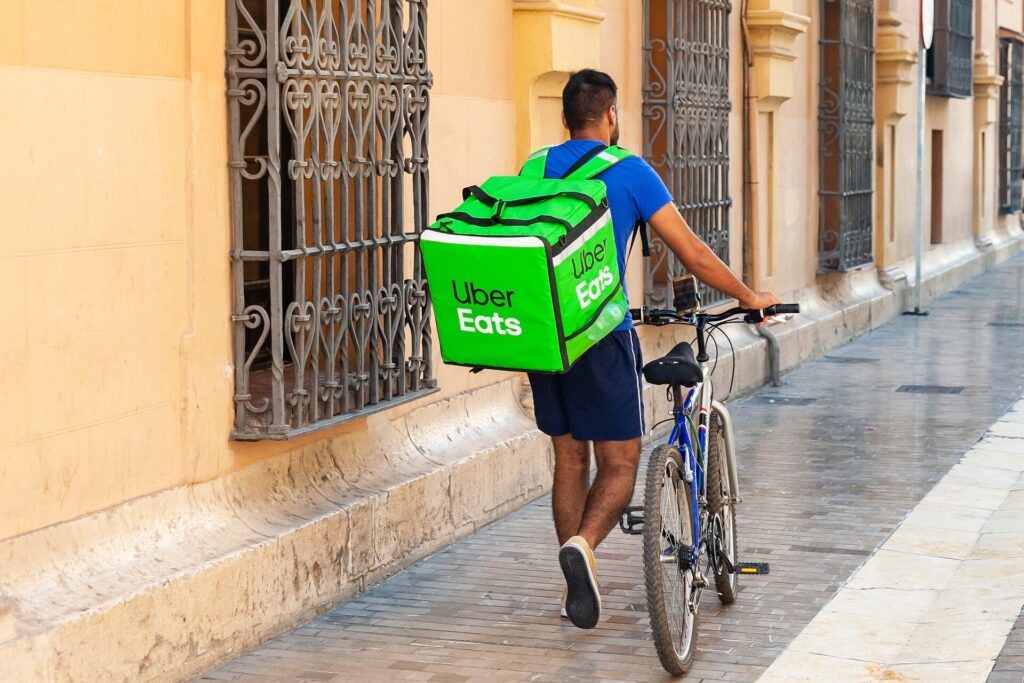
Credit: Pixabay/CC0 Public Domain
As restaurants increasingly turn to technology for food ordering, new research from the University of South Florida finds that digital ordering platforms have a significant impact on consumer behavior, often leading to more indulgent dining choices and increased spending.
The comprehensive study, co-authored by Dipayan Biswas, USF Frank Harvey Endowed Professor of Marketing and MUMMA College of Business, compares the cognitive effects of ordering from a digital screen to traditional methods including printed menus.
As published in the Journal of the Academy of Marketing Science, major restaurant chains such as Panera Bread and McDonald’s have introduced touchscreen kiosks, while other chains such as Chili’s and Applebee’s have introduced tabletop tablets for self-service. Further demonstrating the shift to digital ordering, usage of app-based delivery services such as Uber Eats, Grubhub and DoorDash has continued to increase since the COVID-19 pandemic.
According to the USDA Economic Research Service, the pandemic has led to significant changes in how American consumers get their food, particularly their use of carryout and delivery services: By the second half of 2022, spending on third-party delivery had tripled for quick-service restaurants and nearly quadrupled for full-service restaurants from pre-pandemic levels.
“Digital ordering increases convenience and efficiency, but it also leads many consumers to make unhealthy food choices and spend more,” Biswas said. “Our study highlights the importance of understanding how digital devices affect decision-making.”
Through six studies at restaurants and two at his lab in the USF School of Marketing and Innovation, Biswas and his graduate students looked at the effects of ordering from a digital menu versus a physical menu. The team looked at more than 23,000 orders from a variety of restaurants, including an independently owned Mexican restaurant and a major global dining chain with 1,000 locations in 23 countries.
The study found that 61% of digital orders, including those made for delivery, were unhealthy – more than 3% higher than non-digital orders.
Each item was placed into one of three categories: unhealthy, normal, or healthy. The researchers defined “unhealthy” by portions and item selection, such as fried foods and desserts, while items such as vegetables and fish were considered healthy. Most soups, large salads, and steaks less than six ounces were considered normal.
The research team also found that digital menus have a greater impact on dinner ordering later in the day, when consumers are more likely to be tired and turn to technology, so digital ordering technology may have less of an impact on consumers during breakfast and lunch hours.
“Digital ordering modes encourage less cognitive engagement and a more automated decision-making process,” Biswas said. “This is because digital tools encourage people to rely on automated processes rather than relying on cognitive resources.”
This phenomenon, known as the “Google effect,” suggests that the availability of digital tools changes the way people store and retrieve information, such as using their mobile phone for contacts and GPS for navigation, reducing the cognitive effort required for these tasks. Reduced cognitive engagement in digital environments may lead to more automatic decision-making and more indulgent food choices.
The study found that tech-savvy consumers may be less susceptible to the Google effect, and Biswas said restaurateurs could use the research to tailor their offerings.
“Restaurants looking to promote healthier options may benefit from offering non-digital ordering modes, while others may be interested in promoting indulgent menu items at dinner time through digital ordering to boost sales,” Biswas said.
Biswas plans to continue his research by further exploring how human presence, whether ordering in person or over the phone, influences consumer decisions and whether online environments increase a person’s perceived level of anonymity. He also wants to explore how digital and non-digital modes affect how much consumers spend and how they taste their orders.
Further reading: Annika Abell et al., “Food and Technology: Using Digital Devices for Restaurant Ordering Leads to Indulgent Outcomes,” Journal of the Academy of Marketing Science (2024). DOI: 10.1007/s11747-024-01029-6
Provided by University of South Florida
Source: Digital Food Ordering Drives Increased Indulgence Purchases and Spending, Study Finds (July 23, 2024) Retrieved July 23, 2024 from https://phys.org/news/2024-07-digital-food-indulgence-reveals.html
This document is subject to copyright. It may not be reproduced without written permission, except for fair dealing for the purposes of personal study or research. The content is provided for informational purposes only.


